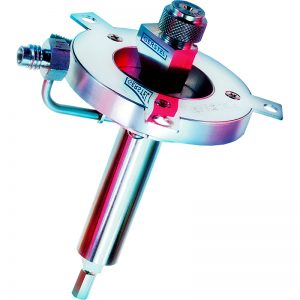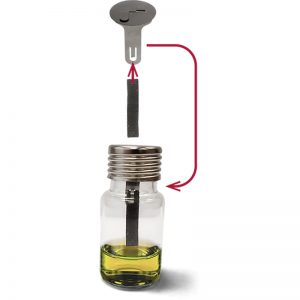Description
The Twister may look like a conventional magnetic stirring rod, but while it stirs samples, such as water, body fluids or beverages it absorbs and concentrates organic compounds into its sorbent coating. A large number of samples can be extracted simultaneously using multi-position stir plates resulting in high productivity and throughput. Labor- and resource-intensive sample preparation steps are eliminated. Analytes are typically desorbed from the Twister using thermal desorption. Liquid desorption using a solvent can be performed whenever the analytes are very high-boiling, thermally labile, or when they must be determined by HPLC.
The GERSTEL Twicester® offers a simple possibility to position one or more Twisters magnetically on the inner wall of a sample vial for more efficient sample extraction. The Twicester approach enables the extraction of a sample using more Twisters simultaneously, for example using Twisters with different types of phases for a more complete combined extraction and improved analyte recovery.
GC-Analysis:
- When the SBSE-step has been completed, the Twister is transferred to either a Thermal Desorption Unit (TDU) or a Thermal Desorption System (TDS). Thermal desorption and GC/MS determination of the concentrated organic compounds are then performed in one integrated system under integrated software control. Using the multi-desorption mode, multiple Twister desorptions can be performed for each GC/MS run resulting in even higher sensitivity and lower limits of detection.
LC-Analysis:
- Involatile, polar or thermally labile compounds can be extracted from the Twister with a solvent using Twister Back Extraction (TBE) for subsequent determination by LC/MS.
Advantages:
- Up to a 1000 times lower detection limits than SPME
- Quantitative, with large linear range
- A large number of samples can be extracted simultaneously for highest productivity
- Requires minimal time and labor
- Thermal desorption and GC/MS analysis are performed in one automated system
Twister Application Fields
- The Twister has proven itself in a wide range of application areas, such as food and beverages, flavor and fragrance, extractables and leachables from packaging as well as environmental analysis. Thanks to its mechanical stability, the Twister can be reused up to 200 times, depending on the sample matrix and desorption conditions, and can also be used for field sampling; it is easy and convenient to use, requires little or no solvent and it is inexpensive to ship to the laboratory for analysis.
| PDMS Twister | EG/Silicone Twister | |
|---|---|---|
| Phase | Polydimethylsiloxane (PDMS) | Polydimethylsiloxane (PDMS) / Ethylene glycol (EG) – copolymer on an inert metal grid for mechanical stabilization |
| Enrichment | Unspecific sorption of apolar compounds log(Kow) > 4 The polarity range can be extended by adding salt to the sample (salting out) |
Unspecific sorption of apolar compounds, additionally specific binding of polar hydrogen bond donors, such as phenols |
| Application examples | Pesticides in water PAH in marine tissue 2,4,6-TCA in wine Flavor compounds in food |
Flavor compounds in beverages |








